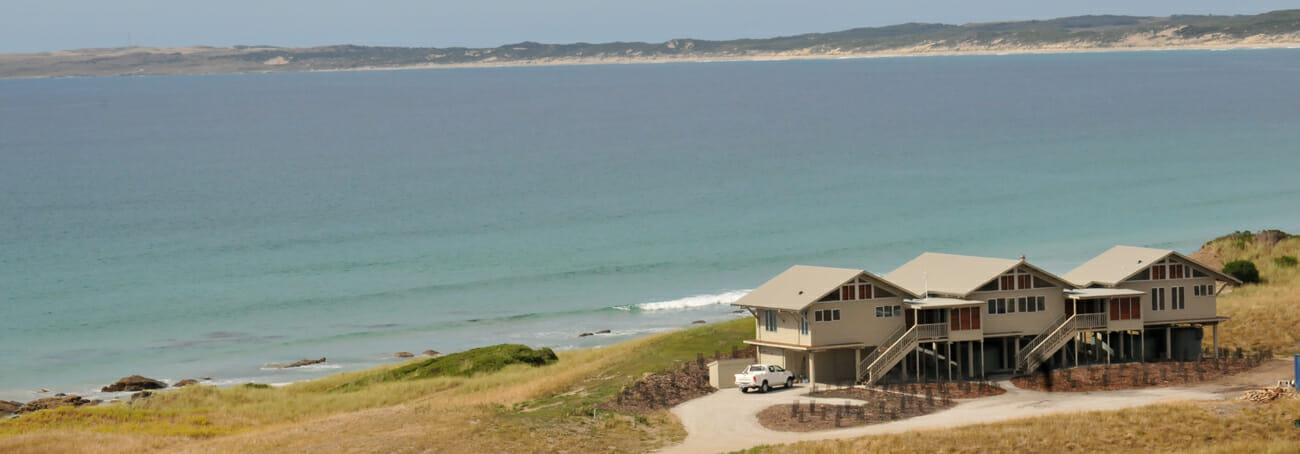Paul Witzig documentarian & architect
Through the 1960s and 70s Paul Witzig brought the sun, sea and surf to Australia through his epoch-making surf documentaries and images. In 2018 this Elder of the Surf is still doing it, with architecture.
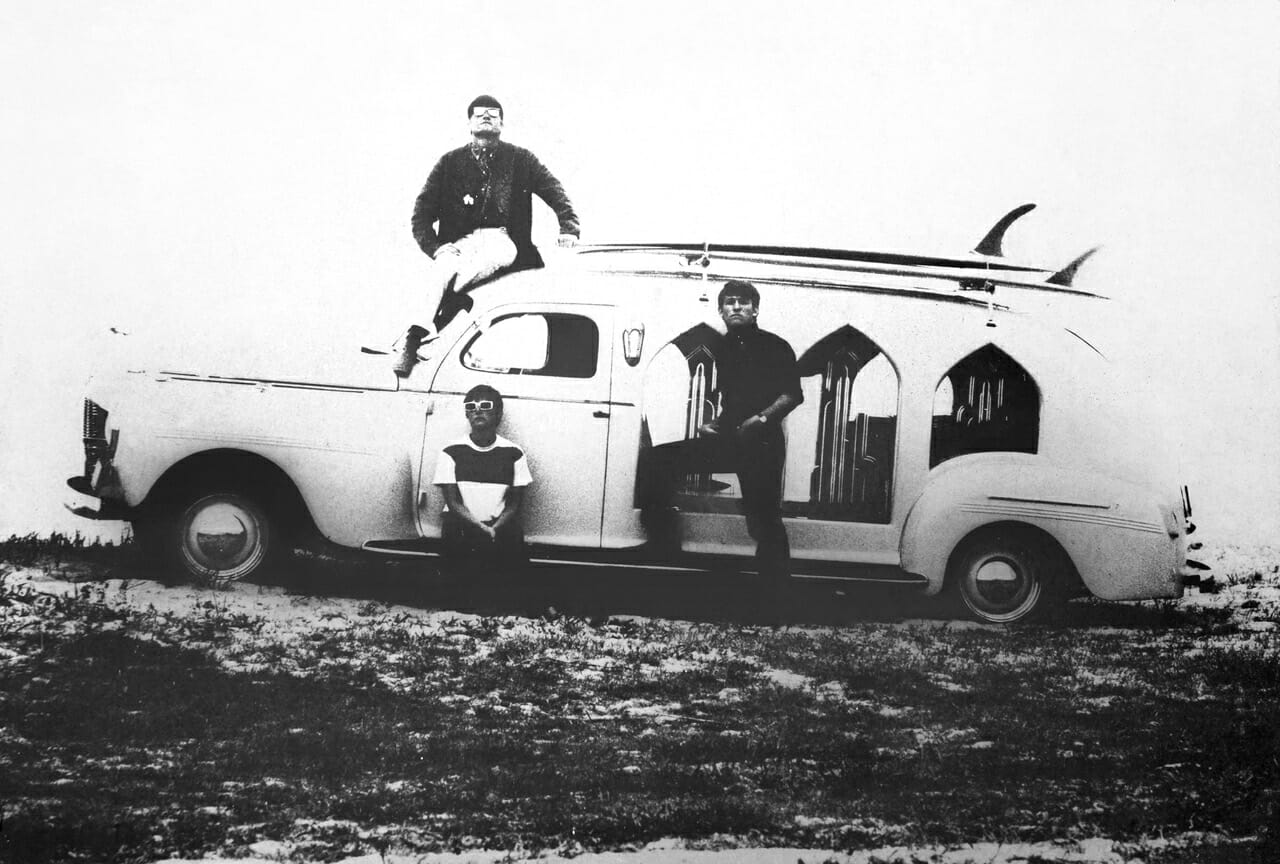
A hearse converted into a surf mobile from Paul’s younger days
An early morning onshore breeze ruffles the leaves of the pandanus that surround the dwelling, bringing with it the sharp tang of the ocean. Sunlight is starting to pour through the louvred windows and pool across the floor, glossing the knots and grains a glowing gold. As the morning moves on the light spreads, warming away the winter chill, running lightly up the wooden walls, glinting off the rugged bolts that hold together the gnarly roofbeams, dropping down through the glass panels that pitch up towards a blue winter sky. An osprey is wheeling above; a lizard lies basking on the woven mat below. Soon the whole house is snug, with just the sound of the birds and the ocean and the whistle of the wind as it gusts outside.
Then a phone rings. “Hello…yes, come on over for a chat and then after how about lunch?” says architect, surfer and film-maker Paul Witzig, when I call him.
I get to his gallery office in Maclean, overlooking the Clarence River. We are not on a rustic island retreat in the South Pacific, but we could be. We are in a Witzig house, designed by Paul and reflecting his fundamental philosophy that houses sit best in the landscape when they work with nature.
“The elements are what is most important: light, air, sun,” Paul says, as we talk in his office, strewn with plans, photographs and fabulous Papua New Guinea art. “I think my response to the natural environment informs everything I do. And I think that human beings find the sun a really important thing, find the wind a really important thing, find the view a really important thing.”

Papua New Guinean sculptures from the gallery
Paul’s primary career has been as an architect, but his first love was surfing and the two, he explains, complement each other.
“Everything always goes back to the surf. I’ve spent an awful lot of my life chasing waves and if you’re a dedicated surfer you are very in tune with the natural environment, with the tides, with the sun, because they determine where you’ll surf and when you’ll surf. You can use that knowledge in the design and construction of a building.”
Paul Witzig became a surf documenter on the northern beaches of Sydney in the 1950s while studying architecture. With his brother John, one of the founders of Tracks magazine, he embraced an alternative lifestyle that espoused freedom and rejected the conservative Australian establishment of the time. His surf films tried to capture this lifestyle, to inform people.
“They thought that we were wild, that we were dangerous. I wanted to show them that our choices were about peace and living with nature.”
If you think that making films about surfing is a long way from the technical expertise and design skill of architecture, Paul does not agree.
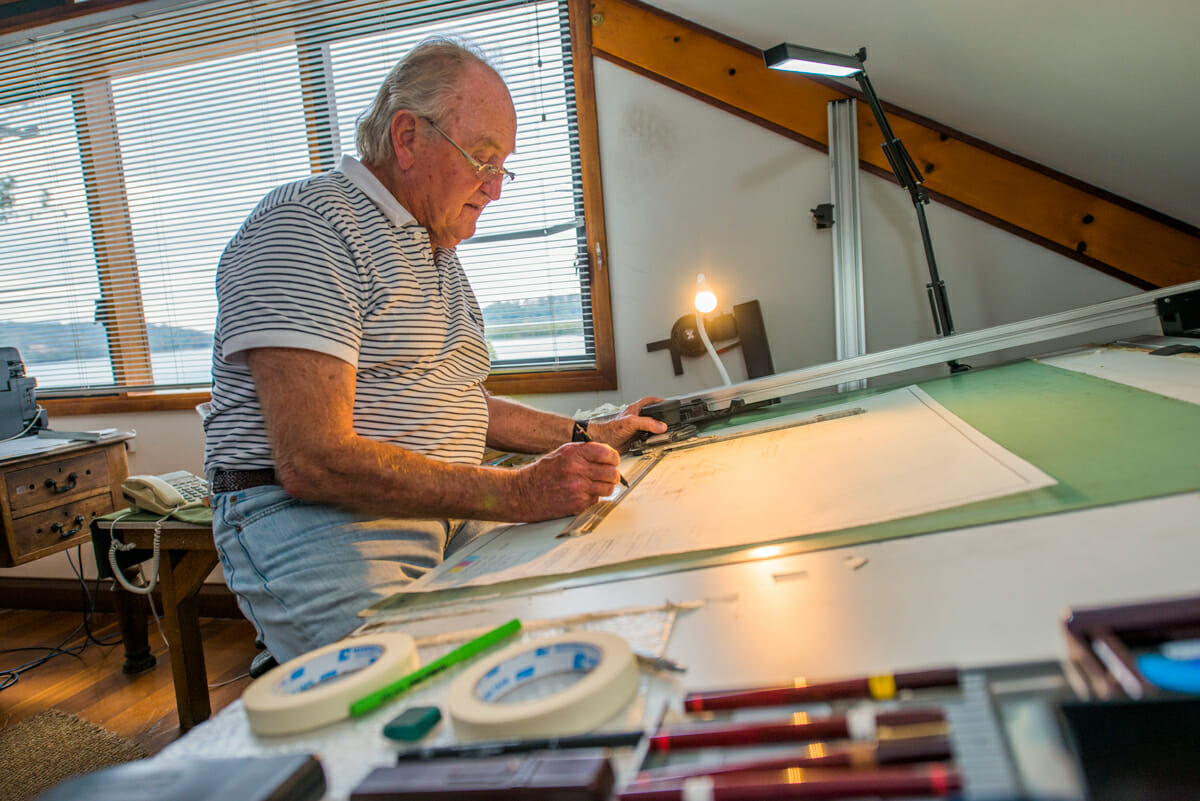
Paul at his work desk
“Film-making is a lot like architecture: you start off with an idea in your head that you sketch on paper; then you bring more people in and form a team, same as if you are constructing a building. The creative process, for me, is very similar.”
Like a film director’s work, every Witzig design is unique, yet there is a distinct look. In this world of concrete and steel a Witzig house is easy to spot: it seems more sympathetic to the landscape than modernist modular constructions. The craftsmanship of Paul’s team is also on display; the exposed wooden beams, bolts and joinery make it obvious that a skilled artisan has made a Witzig home, not a machine or a computer.
The first house Paul ever constructed was when he and his wife Marianne lived on the Great Australian Bight. He foraged for his materials, using stone, timber, old railway sleepers and corrugated iron found in a junkyard. His fabric and design choices were influenced by his surfing lifestyle.
“When we were young, chasing waves all up and down the NSW North Coast, we used to rent old farmhouses for five dollars a week. You go into the paddock and the nicest place to be is under a tree, with the breeze blowing.
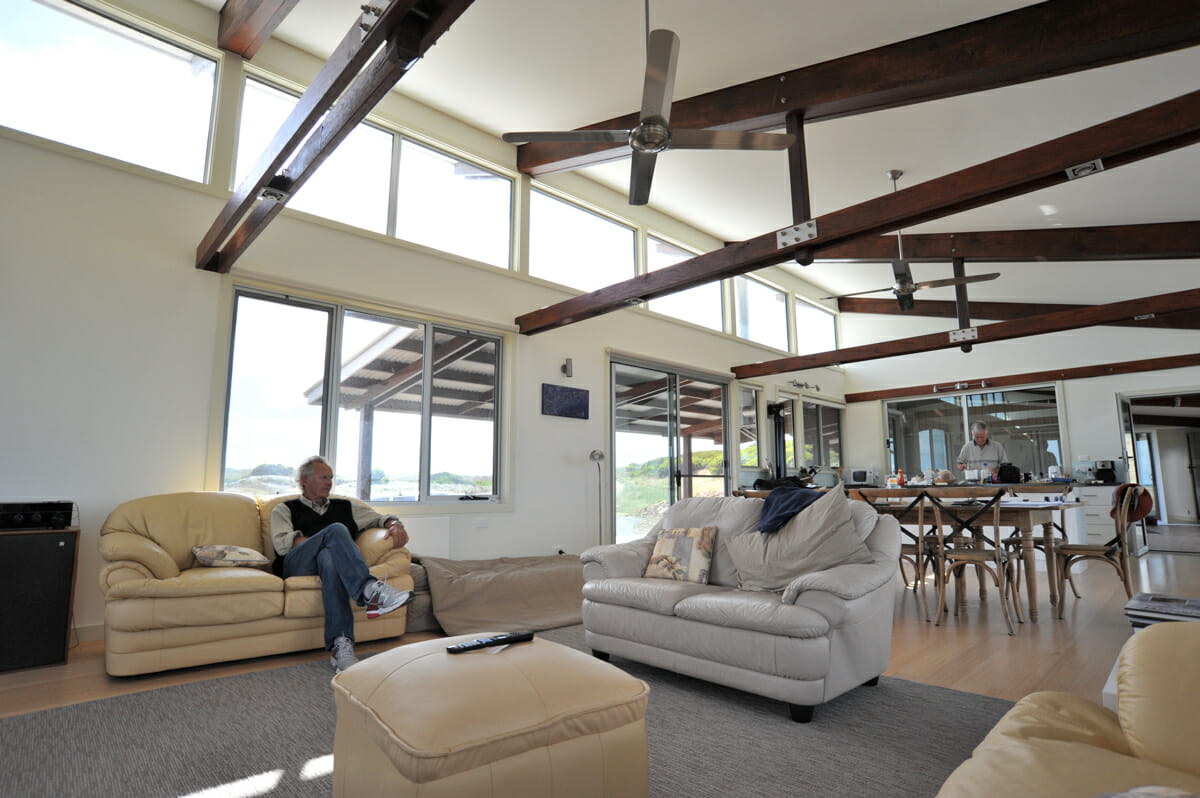
The interior of a Witzig home
What I want to do with these buildings,” Paul says, gesturing to the steep gable above where we sit drinking tea, “is allow the breeze to blow through and take the heat out. That’s why I like the gable roof because the heat rises, so you have louvres at either end to let the breeze blow through, which keeps the house cool and provides natural light all the time.”
Paul’s striking designs are influenced by his involvement with the community of Nusa Island in PNG, where he and Marianne have lived intermittently for the past 25 years.
“There’s art in everything they do in PNG, from their houses to the bowl you eat out of. Everything is beautiful. Obviously, you respond to that.”
Paul also cites a Japanese influence.
“But what it all boils down to,” he says, “is that I believe in simple structures, with good proportions, using beautiful materials, like these wonderful north coast timbers.”
Paul’s design sense reflects his past as a surf film-maker, celebrating his lived knowledge of the environment. In the Witzig films there is an air of community, optimism and wonder.
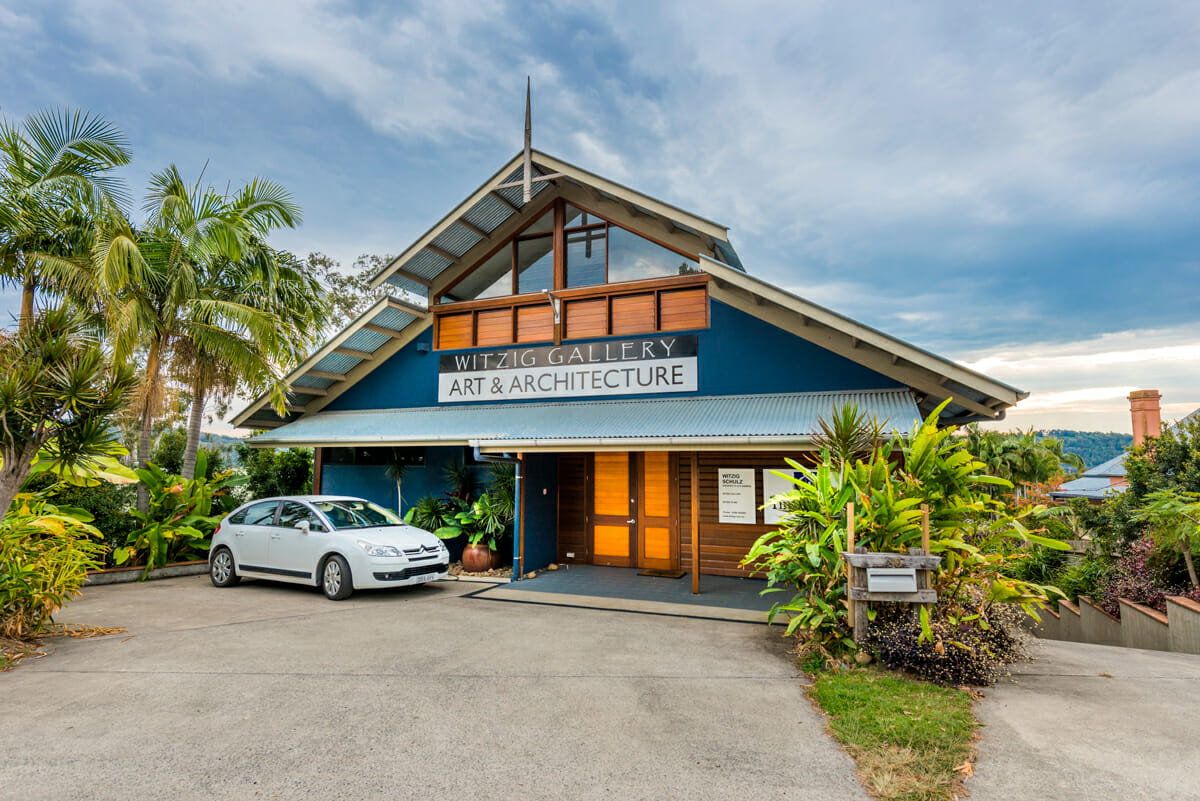
The Witzig Gallery, Maclean
“We felt that we were doing something that was connected to nature. Then surfing became dreadfully commercialised and went off on a track that we wouldn’t have chosen. Yet, a couple of years ago I was asked to be a judge at a short film festival in Sydney. It was really interesting to see films from all over the world and realise that the philosophy we started off with in the 1940s and 50s is now global.”
The short films Paul judged represent a grassroots movement of surfers still chasing waves and freedom, as Paul and his friends did all those years ago.
“There is not a country in the world that does not have a surfing community,” Paul says. “No matter how cold, how adverse the conditions, there are people out there riding waves and I think it’s wonderful.”
I ask if there is any sadness that this attitude of living in harmony with the natural environment is not more common.
“Oh, yeah,” Paul replies. “With this magnificent planet that we live on – we should treasure it, but we trash it and we elect leaders that encourage it to be trashed.”
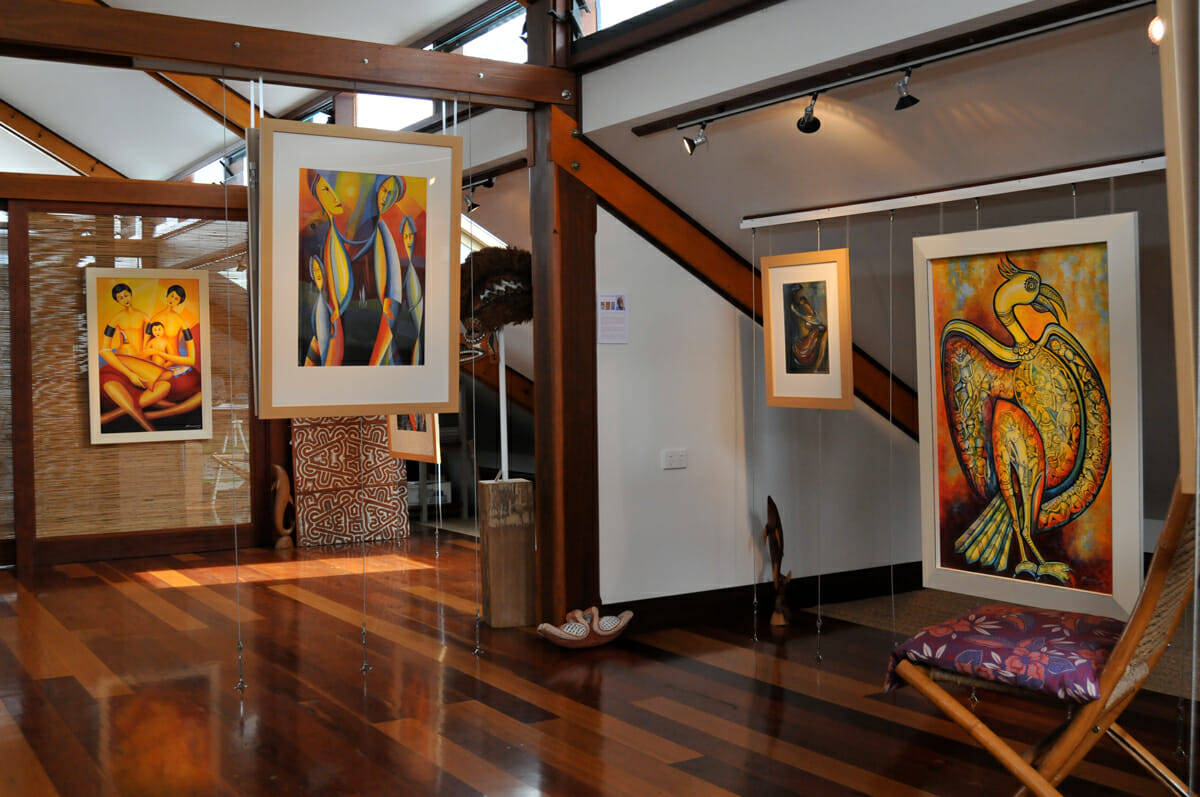
Some of the artworks on show in the gallery
His sons Ramy, Damien and Kristian are working on restoring their father’s seminal surfing films. So far Evolution, Hot Generation and Sea of Joy are complete and the rest are works in progress.
“That was quite a project,” Paul admits. “We had a screening recently and I realised that it was 50 years since we shot the first film. I enjoyed doing the restoration because it was a chance to finish them. I wanted them to be a picture of a world long-gone…a way of life that doesn’t exist anymore. I can let them go now.”
After looking through some stunning images of a Witzig home on the windswept King Island, we leave for lunch. As we step into the wintery chill I comment on how warm it has been in his office and ask Paul whether he has used any new fabric to make his constructions so comfortable.
“All the principles that we use in these houses are wellknown,” he replies with a chuckle. “We don’t do anything new except intuitively use environmental elements to create a good living environment. The natural environment informs everything I do.”
This is perhaps something that we can all build on.
To view Paul Witzig’s work and the Witzig Gallery collection, visit www.witzig.com.au
The Witzig Gallery is located at 80 River St, Maclean.


